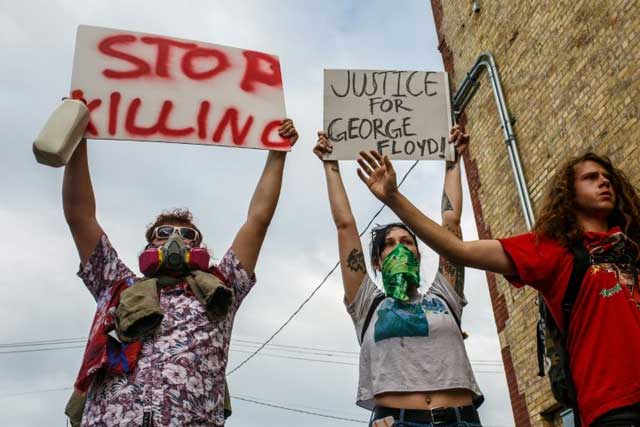
In the US, camera phones increasingly expose racism
by The IndependentNew York, United States | AFP | From the death of a black man in Minneapolis to a racist incident in Central Park, camera phones are increasingly being used as a weapon against racism even when justice doesn’t always follow.
Two videos shot on smartphones spread from social media to mainstream media this week, highlighting how bystanders are now frequently capturing incidents that in the past may have gone unnoticed.
It was a member of the public who filmed George Floyd grasping for breath as a white Minneapolis policeman pressed his knee on Floyd’s neck for at least five minutes on Monday.
Floyd went still and was later declared dead in hospital. Four police officers were fired from their jobs but remain free and the city has witnessed two nights of angry protests.
“If we did not have a video, would the officers have been fired as quickly? Ibram Kendi, director of the American University’s anti-racism research center, asked in an interview with Democracy Now!
“Would they have believed all of those witnesses who were looking at what was happening and who was the asking officers to stop?
In the second incident, a white woman falsely reported Christian Cooper, an avid birdwatcher to police after he requested that she leash her dog in a wooded area of New York’s Central Park.
“I’m going to tell them there’s an African-American man threatening my life,” she told Cooper as he filmed her dial 911 in a video that has been viewed over 43 million times on Twitter.
– Rodney King –
In February, Ahmaud Arbery — also African American — was shot and killed by two white residents while jogging in their neighborhood in Georgia.
A third man, who was later also charged over Arbery’s death, filmed the murder, with the cellphone video sparking outrage when it was leaked onto social media earlier this month.
The filming of such violent incidents is not new.
Since the beating of Rodney King by Los Angeles police in 1991, which was filmed by an amateur cameraman, videos have frequently documented acts of racism across the United States.
But in recent years the capturing of such incidents, with them subsequently going viral online and then being broadcast across major news networks, has becoming more systematic.
“Here’s the sad reality,” tweeted Senator Kamala Harris, a black former candidate to be the Democratic Party’s presidential candidate.
“What happened to George Floyd, Ahmaud Arbery & Christian Cooper has gone on for generations to Black Americans. Cell phones just made it more visible.”
Katheryn Russell-Brown, director of the Center for the Study of Race and Race Relations at the University of Florida, said the videos remind us that “wherever people of color are there’s a vulnerability.
“I would be hard pressed to think of cases involving Whites that show the same kind of instances of harm and assault particularly if we’re talking about law enforcement,” she told AFP.
The increased use of police officers wearing body cameras while on duty over the past decade had raised hopes that the use of force against African Americans would fall.
But after initial studies showed encouraging results, more in-depth reports found that “the cameras aren’t producing the reductions in use of force that were expected,” according to Urban Institute researcher Daniel Lawrence.
Many forces allow officers to turn the cameras off whenever they want, while some have been accused of editing the images before making them public.
– ‘Torn apart’ –
In the death of Eric Garner — by asphyxiation at the hands of a New York police officer in 2014 which sparked the nationwide “Black Lives Matter” movement — it was witnesses who filmed the incident, not police, like with Floyd’s death.
“These videos that are published in public forms really do point to a kind of dysfunctionality in our criminal legal system,” said Russell-Brown.
“It’s sort of suggesting that we need private citizens to make it necessary to watch public officers or people in public spaces to achieve justice or to at least raise the alarm bells about justice,” she added.
Russell-Brown also notes that the presence of a camera often doesn’t prevent the act from being committed in the first place.
Filming can also have major repercussions, with specialists warning of the risks of rushing to judgment on social networks.
Within a day of the Central Park incident, Amy Cooper lost her job as vice-president of a wealth management company, her anonymity and her dog amid a media storm.
“I’m not excusing the racism. But I don’t know if her life needed to be torn apart,” said Christian Cooper, who is no relation to Amy.
As powerful as videos may be, they mean little, if the law doesn’t run its course, say experts.
“They got fired,” said Russell-Brown referring to the officers involved in Floyd’s death.
“Is that enough? No. We have a dead person. So now we want the legal system to do what it’s supposed to do.”
Share on: WhatsApp